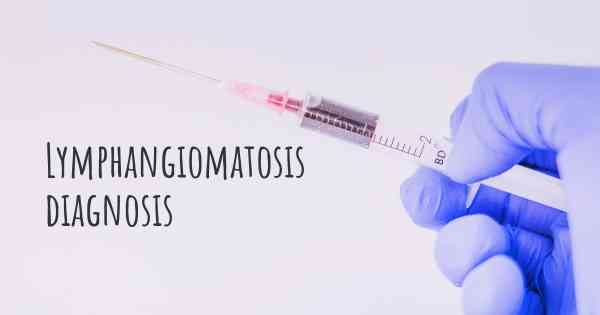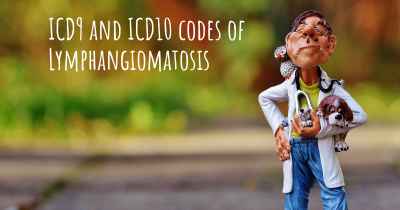How is Lymphangiomatosis diagnosed?
See how Lymphangiomatosis is diagnosed. Which specialists are essential to meet, what tests are needed and other useful information for the diagnosis of Lymphangiomatosis

Lymphangiomatosis is a rare disorder characterized by the abnormal growth of lymphatic vessels. It can affect various parts of the body, including the bones, skin, and internal organs. Diagnosing lymphangiomatosis can be challenging due to its rarity and the wide range of symptoms it can present. However, there are several methods that healthcare professionals use to diagnose this condition.
Medical History and Physical Examination:
The first step in diagnosing lymphangiomatosis is a thorough medical history and physical examination. The doctor will ask about the patient's symptoms, their duration, and any factors that may have triggered or worsened them. They will also inquire about the patient's family history of similar conditions. During the physical examination, the doctor will carefully examine the affected areas, looking for any signs of swelling, masses, or abnormal growths.
Imaging Tests:
Imaging tests play a crucial role in diagnosing lymphangiomatosis. These tests allow doctors to visualize the affected areas and assess the extent of the disease. The most commonly used imaging techniques include:
- X-rays: X-rays can help identify bone abnormalities, such as fractures or lesions, which may be indicative of lymphangiomatosis.
- Ultrasound: Ultrasound uses sound waves to create images of the body's internal structures. It can help visualize cystic masses or abnormal fluid collections associated with lymphangiomatosis.
- Magnetic Resonance Imaging (MRI): MRI uses powerful magnets and radio waves to produce detailed images of the body. It is particularly useful in evaluating soft tissues, such as organs, muscles, and blood vessels. MRI can help identify lymphatic malformations and their involvement in lymphangiomatosis.
- Computed Tomography (CT) Scan: CT scans combine X-rays with computer technology to create cross-sectional images of the body. They can provide detailed information about the size, location, and characteristics of lymphatic lesions.
Biopsy:
In some cases, a biopsy may be necessary to confirm the diagnosis of lymphangiomatosis. During a biopsy, a small sample of tissue is taken from the affected area and examined under a microscope. This allows the pathologist to identify any abnormal lymphatic vessels or other characteristic features of the condition. Biopsies are typically performed using minimally invasive techniques, such as fine-needle aspiration or core needle biopsy.
Genetic Testing:
Genetic testing may be recommended in certain cases, especially when there is a suspicion of a genetic predisposition to lymphangiomatosis. This involves analyzing the patient's DNA to identify any specific genetic mutations or abnormalities associated with the condition. Genetic testing can help confirm the diagnosis and provide valuable information for the management and treatment of lymphangiomatosis.
Other Diagnostic Procedures:
In addition to the above methods, other diagnostic procedures may be used to evaluate the extent and impact of lymphangiomatosis on various organs. These may include:
- Lymphangiography: Lymphangiography involves injecting a contrast dye into the lymphatic vessels and taking X-ray images. It can help visualize the lymphatic system and identify any abnormalities or blockages.
- Echocardiography: Echocardiography uses ultrasound waves to create images of the heart. It can be used to assess the impact of lymphangiomatosis on cardiac function.
- Pulmonary Function Tests: Pulmonary function tests measure how well the lungs are working. They can help determine if lymphangiomatosis has affected lung function.
Conclusion:
Diagnosing lymphangiomatosis requires a comprehensive approach that combines medical history, physical examination, imaging tests, biopsies, and genetic testing. Due to its rarity and diverse manifestations, it is essential for healthcare professionals to consider this condition when evaluating patients with unexplained swelling, masses, or abnormal growths. Early and accurate diagnosis is crucial for appropriate management and treatment of lymphangiomatosis.








